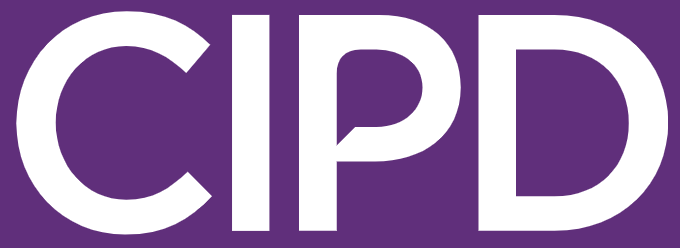You can’t separate how you lead from how you govern.
As a lawyer-turned-HR consultant, I’ve spent my career straddling two worlds: the rulebook and the real world. One is structured, precise, and necessary. The other is human, messy, and just as essential. And in that tension — between compliance and compassion — is where culture lives.
Too often, I'm brought into organisations after something has gone wrong: a grievance, a breakdown in trust, a regulatory red flag. The common thread? Culture wasn’t ignored — it was left to chance. And leadership assumed compliance alone was enough.
It isn’t.
Culture isn’t a campaign
Let’s be honest: culture isn’t something you launch. It’s not a strategy deck, a set of values, or a “people initiative.” It’s who the leadership are — especially under pressure. It’s shaped by what they choose to ignore, tolerate, or protect.
If a founder avoids conflict, that will show up in their team. If a board protects poor behaviour because the results look good, that becomes the norm. Culture isn’t a statement — it’s a mirror. And very often, it reflects things leaders don’t want to see.
Compassion and compliance aren’t opposites
In small organisations, there’s often a perceived trade-off between compassion and compliance. “We’re a close team — we don’t want to be too formal.” Or: “We just need to stay legally covered.”
But good governance doesn’t kill culture — it enables it. Clear expectations, fair processes, and real accountability don’t create red tape. They create trust. And trust is what makes people feel safe enough to do great work.
If your people are confused, second-guessing decisions, or quietly burnt out, the issue usually isn’t a missing policy — it’s a lack of courage at the top.
Boards can’t look away
The most common blind spot I see? Boards and Senior Management teams treating culture as “HR’s job.” It’s not. Culture is governance. And when it’s not working, it’s the board’s responsibility — not the People Lead’s.
Unclear expectations become inconsistent treatment. Poor boundaries become safeguarding issues. An informal vibe becomes exclusion or burnout if no one’s checking in. These aren’t operational problems — they’re strategic risks.
If you're on a board or in a leadership team, ask yourself: What are we avoiding? And what message does that send?
It’s not about overcomplicating — it’s about being brave enough to ask:
What are we actually telling people matters here?
Because whatever the answer is — that’s your culture.
And it always starts at the top.
Constructive feedback is a powerful tool for nurturing talent and driving improvement. When delivered thoughtfully, it fosters a culture of continuous learning and development.
In the dynamic landscape of professional development, effective communication stands as the cornerstone of success. Among the myriad forms of communication in the workplace, 1-2-1 meetings play a pivotal role in fostering growth, aligning objectives, and nurturing talent. At the heart of these interactions lies feedback – a powerful tool for improvement and advancement. In this article, we delve into the art of giving feedback and explore ways to elevate your 1-2-1 meetings for maximum effectiveness.
Understanding the Power of Feedback:
Feedback is more than just a performance review; it's a constructive dialogue aimed at enhancing skills, fostering growth, and achieving goals. When delivered effectively, feedback can inspire motivation, boost morale, and drive productivity. However, giving feedback is an art that requires finesse, empathy, and clarity.
The principles of effective feedback
1. Establish trust and respect
Before serving feedback, it's crucial to establish a foundation of trust and respect with the recipient. Build rapport through open communication, active listening, and demonstrating empathy. When individuals feel valued and respected, they are more likely to be receptive to feedback, even if it's constructive criticism.
2. Choose the right time and place
Timing is everything when it comes to delivering feedback. Choose a suitable time and place where both parties can engage in a focused conversation without distractions. Avoid delivering feedback in public or high-pressure situations, as this can lead to defensiveness and undermine the effectiveness of the message.
3. Be specific and objective
Effective feedback is specific, objective, and based on observable behaviours or outcomes. Avoid making generalised statements or judgments about an individual's character. Instead, focus on providing concrete examples to illustrate the behaviour or performance you're addressing. This specificity helps the recipient understand the impact of their actions and provides a clear roadmap for improvement.
4. Focus on Growth and Solutions:
Feedback should be viewed as a tool for growth and development, rather than a punitive measure. Instead of dwelling solely on mistakes or shortcomings, focus on solutions and actionable steps for improvement. Collaborate with the recipient to identify strategies and resources that can support their development goals.
5. Encourage Two-Way Communication:
Feedback should be a dialogue, not a monologue. Encourage the recipient to share their perspective, ask questions, and provide input on the feedback received. Active participation fosters mutual understanding, strengthens relationships, and promotes a culture of open communication within teams and organisations.
6. Follow Up and Offer Support:
After delivering feedback, follow up with the recipient to check on their progress and offer ongoing support. Celebrate achievements, acknowledge growth, and provide additional guidance or resources as needed. Continuous feedback and support demonstrate your commitment to the individual's success and reinforce a culture of accountability and improvement.
Serving feedback in the right way is a skill that can transform relationships, drive performance, and elevate organisational success. By establishing trust, being specific and objective, focusing on growth and solutions, and fostering open communication, you can deliver constructive criticism effectively and empower individuals to reach their full potential. Remember, feedback is not just about pointing out flaws—it's about guiding individuals towards excellence and fostering a culture of continuous learning and improvement.
In today's rapidly changing world, HR professionals are facing unprecedented challenges and opportunities. From the widespread adoption of remote work to the increasing focus on employee well-being and EDI initiatives, organisations are navigating a complex landscape of evolving trends and policies.
This article explores some of the most prominent HR trends and policies shaping the modern workforce, highlighting strategies for adaptation and success in the face of change. Whether it's embracing remote work, prioritising employee well-being, or leveraging data-driven insights, staying abreast of these trends is essential for HR leaders seeking to drive organisational growth and foster a culture of innovation and resilience.
1. Remote Work and Flexible Working Arrangements: The pandemic only accelerated what was meant to eventually happen, and the adoption of remote work and flexible working arrangements is now the norm. Many companies are implementing policies to support remote work, including flexible hours and distributed teams.
2. Employee Well-being and Mental Health Support: Employers increasingly prioritise employee well-being and mental health support. This includes initiatives such as employee assistance programs (EAPs), mental health days, and resources for stress management and resilience building.
3. Equality, Diversity, and Inclusion (EDI) Initiatives: EDI remains a key focus area for many organisations, with efforts to foster more inclusive workplaces through diversity training, hiring initiatives, and promoting a culture of belonging.
4. Skills Development and Continuous Learning: Continuous learning and skills development are emphasised as companies seek to upskill and reskill their workforce to adapt to changing technologies and business needs. This often involves investing in training programs, online learning platforms, and mentorship opportunities.
5. Agile Performance Management: Traditional performance management systems are being replaced or augmented with more agile and feedback-driven approaches. This includes regular check-ins, real-time feedback mechanisms, and goal-setting frameworks focused on outcomes rather than activities.
6. Remote Onboarding and Virtual Recruitment: With remote work becoming more prevalent, companies are adapting their onboarding processes to be conducted virtually. Similarly, recruitment processes are being conducted remotely, utilising video interviews and virtual assessments.
7. Data-Driven HR: HR departments increasingly leverage data analytics to inform decision-making processes related to talent acquisition, retention, and performance management. This includes using data to identify trends, predict future needs, and measure the effectiveness of HR initiatives.
8. Flexible Benefits and Total Rewards: Employers offer more flexibility in benefits packages to meet the diverse needs of their workforce. This includes options such as flexible spending accounts, wellness incentives, and customisable benefits packages.
9. Remote Employee Engagement: Maintaining employee engagement and connection in a remote or hybrid work environment is a priority for many organisations. This involves implementing virtual team-building activities, communication tools, and recognition programs tailored to remote workers.
10. Sustainability and Corporate Social Responsibility (CSR): Companies integrate sustainability and CSR initiatives into their HR policies, reflecting a growing emphasis on environmental and social impact. This includes initiatives such as volunteer programs, green initiatives, and sustainable procurement practices.
These trends and policies reflect the evolving nature of the workplace and the ongoing efforts of HR departments to adapt to changing circumstances and priorities. It's essential for organisations to stay agile and responsive to emerging trends, to effectively support their workforce, and drive business success.
In today's fast-paced and demanding work environments, the mental health of employees has emerged as a critical concern for organisations worldwide. The recognition of mental health as a vital component of overall well-being has grown substantially in recent years, driven by a deeper understanding of its impact on employee productivity, engagement, and retention. In this article, we delve into the significance of prioritising employee mental health, explore the challenges faced by organisations, and outline proactive strategies for fostering a supportive workplace culture.
The Importance of Employee Mental Health
Employee mental health is not merely a personal matter but a crucial determinant of organisational success. Research consistently demonstrates that mental health issues, if left unaddressed, can have profound consequences for both individuals and businesses. Poor mental health can lead to decreased productivity, increased absenteeism, higher turnover rates, and elevated healthcare costs. Moreover, it can contribute to a negative work environment, erode employee morale, and hinder organisational performance.
Challenges Faced by Organisations
Despite the growing awareness of mental health issues, many organisations still struggle to effectively support their employees' well-being. Common challenges include stigma and discrimination surrounding mental illness, lack of awareness and understanding among managers and colleagues, insufficient resources allocated to mental health initiatives, and the pressure to prioritise productivity over employee welfare. Additionally, the transition to remote and hybrid work models amidst the COVID-19 pandemic has presented new challenges in maintaining connectedness and addressing mental health concerns in virtual settings.
Proactive Strategies for Fostering Employee Mental Health
To create a workplace environment that prioritises mental health, organisations must adopt proactive strategies that promote awareness, support, and resilience among employees. Here are some key initiatives that can be implemented:
-
Cultivate a Culture of Openness and Support: Encourage open dialogue about mental health and create a supportive environment where employees feel comfortable seeking help without fear of judgment or repercussions. Train managers and leaders to recognise the signs of mental distress, respond empathetically, and provide appropriate support and resources.
-
Provide Mental Health Resources and Services: Offer a range of mental health resources and services, such as employee assistance programs (EAPs), counseling services, and mental health hotlines. Ensure that these resources are easily accessible, confidential, and tailored to meet the diverse needs of employees.
-
Promote Work-Life Balance: Foster a culture that values work-life balance and encourages employees to prioritise self-care and personal well-being. Implement policies and practices that support flexible work arrangements, promote healthy boundaries between work and personal life, and discourage excessive overtime or burnout.
-
Invest in Mental Health Training and Education: Provide comprehensive training and education on mental health awareness, stress management, resilience-building, and suicide prevention for all employees. Equip managers with the skills and knowledge to recognise and respond effectively to mental health issues in the workplace.
-
Foster Social Connection and Community: Facilitate opportunities for social connection and community-building among employees, whether in-person or virtually. Organise team-building activities, wellness events, and peer support groups to foster a sense of belonging and camaraderie.
-
Lead by Example: Demonstrate leadership commitment to employee mental health by integrating mental health initiatives into organisational policies, practices, and communications. Senior leaders should openly prioritise their own mental well-being and role-model healthy behaviours for employees to emulate.
Prioritising employee mental health is not only a moral imperative but also a strategic necessity for organisations seeking to thrive in today's complex and competitive business landscape. By fostering a supportive workplace culture that values mental well-being, organisations can enhance employee engagement, retention, and performance while cultivating a healthier and more resilient workforce. By investing in proactive mental health initiatives, organisations can create environments where employees feel valued, supported, and empowered to thrive both personally and professionally.
If you are an interviewer or hiring manager, read this.
Can you recall moments of your childhood, when a parent was asking questions that made you nervous, maybe because it was about something that could get you into trouble? Or times when someone would ask questions trying to stump you as if they were lawyers in court, did you feel pressured, uncomfortable, did it scare you? If you’ve ever felt interrogated and got defensive, you should know, most of us have been there.
No matter how experienced you are in giving interviews, there’s always something nerve-wracking about trying to think of the best answer to give to interview questions. But is this how interviewees should feel? Not really. Your job as a hiring manager, and an interviewer, is to find who the person that’s in front of you really is, and if they’re able to do the job. Turning up with questions that will make your candidates sweat, isn’t really the point of the interview.
Here are some ways to help you ensure that you interview your candidates in a way that feels like a conversation with a colleague, or another professional rather than school oral exams, or interrogations.
- Make candidates comfortable. That can range anywhere from offering them a glass of water, asking them about their day, to just setting up the chairs in the meeting room properly, and being friendly and welcoming in general. You could start with some modest, low-key questions, and make sure they’re comfortable and happy to be there.
- Ask questions that will get the candidates talking. It’s important to know enough about the job to be an active participant. This will help engage the interviewee and will initiate a great conversation, where they’ll have the opportunity to show you how passionate they are about the job, and why not, how much they know. Do you know body language? Check out if they shine when talking about work. Check if they talk about things that only someone who cares, and keeps up to date, knows. Do they share opinions on hot topics around the profession? These are all great ways to tell how passionate the applicant is about the job you’re offering.
- Most professionals have long-term career plans. Even the ones who might end up working on fixed-term contracts, or temporary assignments. Questions around their future plans are not (only) typical, boring HR questions, but they do actually serve a purpose. Do your candidates really sound like they have a plan and ambition? Do they sound like they just picked up an answer from the internet? Well, this should tell you something as well.
- Tell stories. Both of you. Who doesn’t love stories? Share yours and ask them to share theirs too. Apparently, people remember stories a lot better than just being told something “is the way it is”. In fact, a study done at Stanford showed that “stories are remembered up to 22 times more than facts alone.”
- Allow them room to start a conversation about how they can contribute to your company. This is another effective way to understand how much they care, how much they want it if they’ve made their research about your company, and how deep they’ve gone.
- Show you’re truly interested in them. Q&A is not really what someone would classify as a “good” interview, but monologue isn’t either. The interview is and should be, a conversation between two professionals. It’s not about the applicant trying hard to convince you that they have the skills to do the job, and it’s also not a time for you to start going on and on about how amazing is to work for your company. Instead, this is a very good opportunity to really dig deep into who the person is, and also show that you do care to find that out. Respond to their answers thoughtfully and ask them to talk more about certain aspects (guess what: in other words, actually just make it a conversation).
- Align the company’s goals with the candidate’s goals. Yes, the most vital thing at this moment for you, is to find someone who’s a great fit for your company, but don’t forget that it’s equally vital for your applicant to find a company that is a good fit for their needs. The much-talked-about “psychological contract”, works both ways, and the employment relationship is itself essentially a two-way relationship. Always. If the goals of both parties are not looked after, if expectations of both are not met, then one party, or both, will end up feeling dissatisfied with the situation.
In a nutshell, go for the conversation and stay away from the interrogation!
Interviewing is, and should be treated like, an opportunity to get to know someone, not a process where you attack a list of potential employees with a set of interrogative questions. Candidates will be more comfortable, and you will be able to more effectively evaluate whether they will be a good fit in your company if you go down the conversational route. Of course, there needs to be some alignment to ensure you stay unbiased and assess them equally, but that does not mean you have to follow a script with the exact same questions. You will have succeeded in this approach if you end the interview feeling like you just made a friend, or a new, interesting acquaintance. And if they’re not the lucky ones to be shortlisted, at the very least they will walk away with a positive feeling that you treated them like a valued individual, and not just another candidate responding to a set of questions. Not one size fits all!
Employers are by law required to set out a grievance procedure and share it in writing with all employees. It can be part of the employment contract, or outlined in the employee handbook. The Grievance Policy and Procedure should include details on the process (i.e., how to raise a formal grievance), and the point of contact (who it can be raised with, and their contact details). Although the Acas Code of Practice isn’t legally binding, an employment tribunal can reduce or increase any money awarded in a case by up to 25% if the code hasn’t been followed.
Considering the above, there’s no doubt that having a reasonable grievance procedure in the workplace can help avoid lengthy, complicated, and costly tribunals. If you’re not careful, grievances can turn into major problems that affect your entire business, even to the point of losing staff, or being liable for a hefty claim.
Process
A grievance should, in the first instance, be dealt with informally. This can include an informal conversation with the employee concerned, or an informal conflict resolution process, if more individuals are involved, and the case can be closed at this stage. If, however, it is of a more serious nature, the employer may have to move to the formal grievance procedure.
That includes 4 main steps:
- Grievance to be put in writing
- Thorough investigation to take place
- The actual Grievance Hearing
- The Grievance outcome.
It is crucial that grievances are dealt with in a timely manner.
A grievance hearing should be conducted fairly and impartially, with the employee given the opportunity to put their concerns without interruption.
Overall, the grievance policy and procedure should comply with the general principles of natural justice and fair process. That includes the following:
- A fair, transparent process and thorough investigation/examination of all employee grievances.
- An opportunity for the employee to be heard and allowing them to discuss their concerns and put their case forward.
- The right for the employee to be accompanied by a work colleague or trade union representative.
- An impartial decision on the outcome of the grievance, and appropriate subsequent action.
Apart from meeting legal obligations, a clearly defined grievance process allows you to communicate how your employees can raise complaints and sets out clearly how the company will deal with them.
It should also help protect the employee from facing unfair treatment because of raising a grievance and should promote a healthy grievance culture.
Regardless of the nature of the grievance, employees should have confidence that their complaints will be taken seriously and dealt with timely, fairly and impartially.
An effective grievance procedure is important in fostering a culture of fair treatment that encourages commitment and staff retention.











